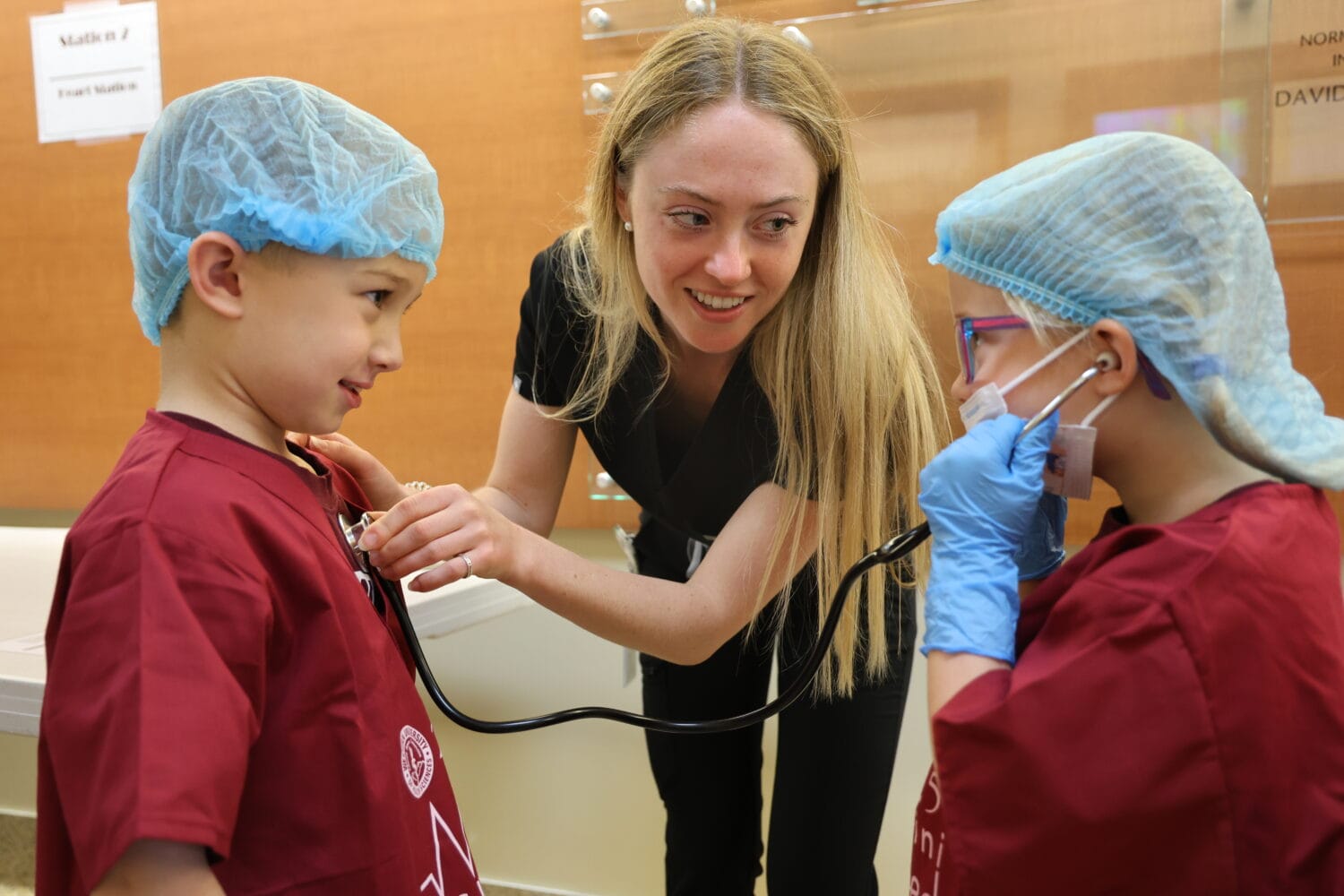PT students walk and roll, gain experience with crutches, canes and wheelchairs
Physical therapy was ranked No. 7 in a list of 50 "Best Jobs in America" in a November issue of CNNMoney.com and was ranked among the "Best Careers of 2009" by U.S. News and World Report recently.
The job outlook for physical therapists is expected to grow 27 percent from 2006 to 2016. Demand will increase as treatment and techniques expand, as the number of people with disabilities or limited function increase and as the elderly population grows, according to the Bureau of Labor Statistics’ 2008-09 occupational outlook handbook on physical therapy.
"We have a great opportunity to grow as a profession, especially now, with not only the baby boomers aging, but the financial stress on the health care system," said Western University of Health Sciences Assistant Professor Janet Konecne, PT, DPT, OCS, CSCS, Department of Physical Therapy Education. "Our skills in identifying movement dysfunction before it becomes a problem is a wonderful skill."
A physical therapist’s goal is to improve their patient’s range of motion, flexibility, mobility and strength so that they may become more independent. Patients need help to recover from a surgery, accident, or illness.
At WesternU, students in their first semester in the Doctor of Physical Therapy (DPT) program, part of the College of Allied Health Professions, get hands-on experience with wheelchairs, crutches and canes during a Patient Care Skills class. Students learn about working with mobility, the ability to move from point A to point B and the need to use these devices.
"We are not only showing them how the patients have to manage these pieces of equipment, but also how we as therapists can help train them with this equipment," Konecne said. "In a bigger picture, it’s one of the many semesters they get to do things. They learn experientially."
Students spend time rolling or walking through campus buildings and the esplanade on crutches, with canes and walkers, and in manual and electronic wheelchairs. Electronic wheelchairs include the joystick, the chin drive and the "sip and puff," giving students a chance to see what types of challenges patients face.
During an electronic wheelchair demonstration, students tested various ways to get around. Meg Barker, DPT ’12, had a tough time using the chin drive mechanism on one of three chairs that were brought to campus by an Invacare Corporation representative.
"You think being in a wheelchair is easy, but it’s not," said Barker. "It’s interesting because you learn from a patient’s point of view. You get a feeling of how they are feeling and what they are going through."
While trying out crutches, many students were caught cheating, called out by their fellow students doing the same thing. They would bend too much, walk without the support and not properly open and get through doors.
There are two types of crutches. Axillary crutches are used under the arm at the armpit, where the weight is carried at the shoulder area. Canadian crutches are designed to have weight carried at the forearm.
Jared Bair, DPT ’12, was one of about a half-dozen students who crossed campus recently using the Canadian crutches. He expended a lot of energy, hopping like a bunny, using his momentum to propel him forward. He seemed relieved when he was stopped at a red light to catch his breath before it turned green.
"This is a good experience. It would be hard to get around on these every day," Bair said. "It’s unique to get to see disabilities and see what it’s like for people to use crutches, walkers and wheelchairs. It’s good to understand this, and is a huge part of the health care industry. Plus it’s great way to be able to show empathy."
During the summer semester, DPT students (usually students participate in the 48-hour program as part of their first semester, but this year was different), will spend 48 hours in a wheelchair to get a sense of what it would be like to live without full use of their legs.
"Students will experience some psychosocial issues, experience psychological and social challenges, mobility issues, and may get a sense of compassion from the patient side of injury," Konecne said. "Life can be flourishing at one moment and in an instant, life can change."



